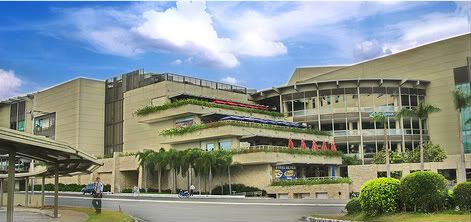20 July 2008 | 11:30 PM
By Isah V. Red
MALL cinemas are racing to build expensive theaters with stadium-style seating, the arrangement film buffs seem to prefer because they see the screen wherever they’re seated.
The race heated up after a new kid on the block, Ayala’s Trinoma, beat longtime leader SM North Edsa with its seven-screen multiplex and their stadium configuration. It signaled that the auditorium style that Henry Sy used to draw the hordes to his malls may have outlived its usefulness, and Trinoma’s box office receipts show it. During this month’s first weekend alone, for instance, Trinoma’s multiplex contributed P2.37 million to the P36.21 million that the movie Hancock grossed in four days, beating SM North Edsa’s P1.61-million take.
Trinoma’s success surprises even Ayala Cinema’s Rollie Dueñas. “We didn’t expect us to be the theaters of choice among the market in Quezon City, considering there are other theaters nearby” Dueñas says of his multiplex whose tickets are priced P20 higher than SM North’s. “We’re glad we’re doing well-especially with the English-language films.”
A spokesman for Hancock’s distributors says Trinoma’s theaters are drawing the crowds because of the mall’s access to the commuter trains serving the Monumento-Baclaran sector, its taxi bays, and its bus and jeepney stops.
Ric Camaligan, vice president of SM Leisures, acknowledges that Trinoma has overtaken SM City North Edsa in movie ticket sales. “The mall is new and as we know, we like to try what’s new,” he says.
Implicitly, Camaligan acknowledged that the stadium style may have been winning the ticket war when he said the new SM City Marikina would have stadium-style seating. The Sys’ other theaters face fixing up as well.
“We’re retooling some,” Camaligan says. “We’ve converted one of the theaters in The Block [on SM North] into a digital 3D screen, a downsized version of the IMAX at the SM Mall of Asia. We also added digital projection in some of our theaters to accommodate digital films.”
HE Sys’ reconfiguration of their multiplexes represents some sort of admission that they might have failed to read their market or the competition or both. Indeed, the market leader that brought down the cinema palaces on Rizal Avenue and Aurora Boulevard and Cubao in Quezon City—the cinemas that ruled the roost from the 1950s up to the late 1970s—is now following trends instead of starting them.
Sy brought down the movie palaces when he offered theaters at the SM City North Edsa with state-of-the-art sound and wide screens in 1983. Dispensing with the balcony, but retaining the orchestra and loge sections of the old cinema palace, he introduced the auditorium style of seating in the mall’s eight theaters, and then added four more five years later to present the biggest multiplex in the country.
SM North Edsa became the template for other developers wanting to ensure a constant flow of human traffic in their malls, and it just grew and grew. It eventually offered 50,000 seats to become the biggest theater circuit in the country, so that one simultaneous screening means P26 million in gross receipts at P130 per ticket in just one day.
The multiplexes at the SM malls reigned, but the competition eventually wised up. As if on cue, the Power Plant in Rockwell, the Shangri-La Plaza in Mandaluyong, and the Gateway in Quezon City rejected the auditorium style in favor of the stadium in building their cinemas. The Robinsons malls in Manila and Mandaluyong reconfigured their auditoriums into stadiums, and three years ago the Aranetas built a spanking multiplex with 10 screens on top of Gateway Mall—one of those a premium theater exclusive to Globe Platinum members, and with La-Z-Boy seats.
The SM group finally took notice when Trinoma, the new high-end mall just across the street, embraced the stadium design and got the crowds coming. The group had initially ignored the trend, saying its theaters were meant for a market that did not really care about technological advances in movie exhibition like digital surround. Now it’s having second thoughts about it.
Still, while the auditorium style of seating in multiplexes may have been out of fashion, Camaligan of SM Leisures says SM is not about to plunge into a wholesale reconfiguration of its existing cinemas. That will require some serious study, he says, because a new theater with state-of-the-art projection and sound means millions of pesos in investment.
“That’s a lot of money at a time when the movie industry worldwide is going through difficult times,” he says.
Link
http://www.yehey.com/news/Article.aspx?id=220497


